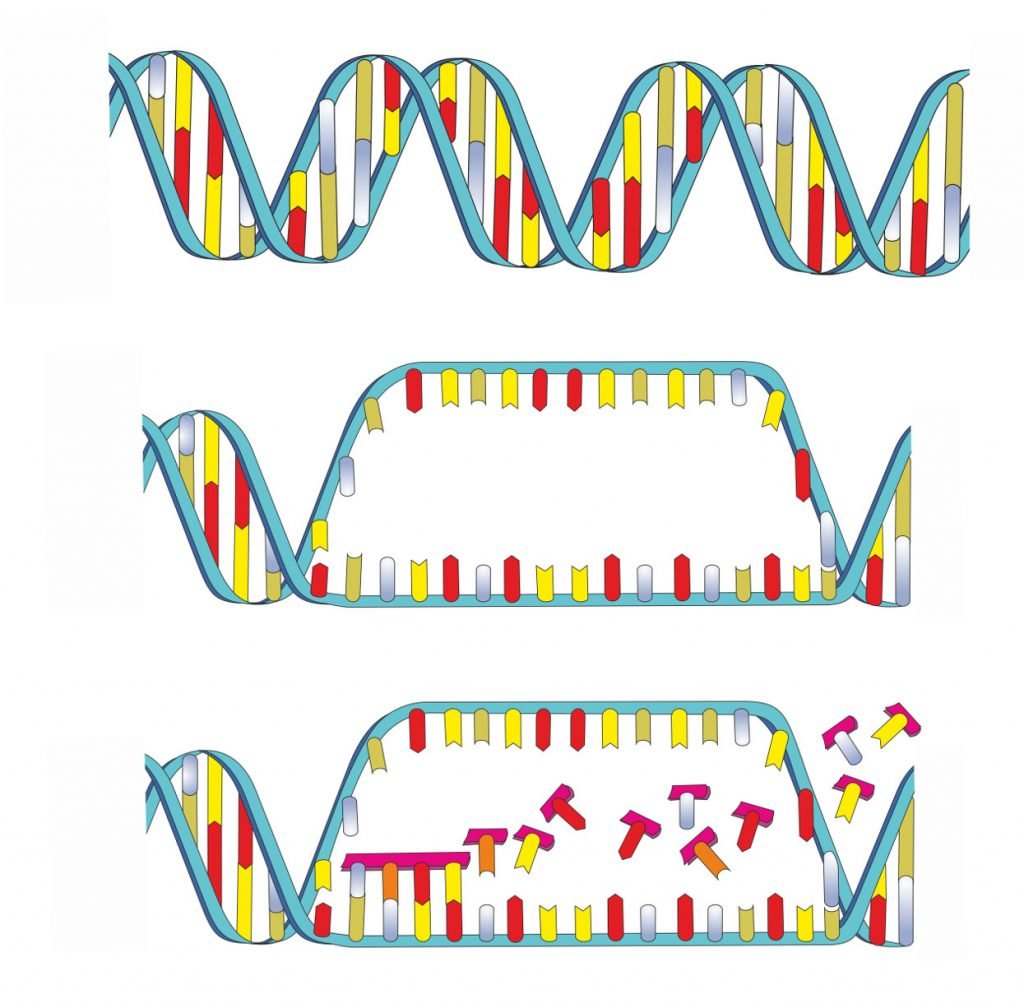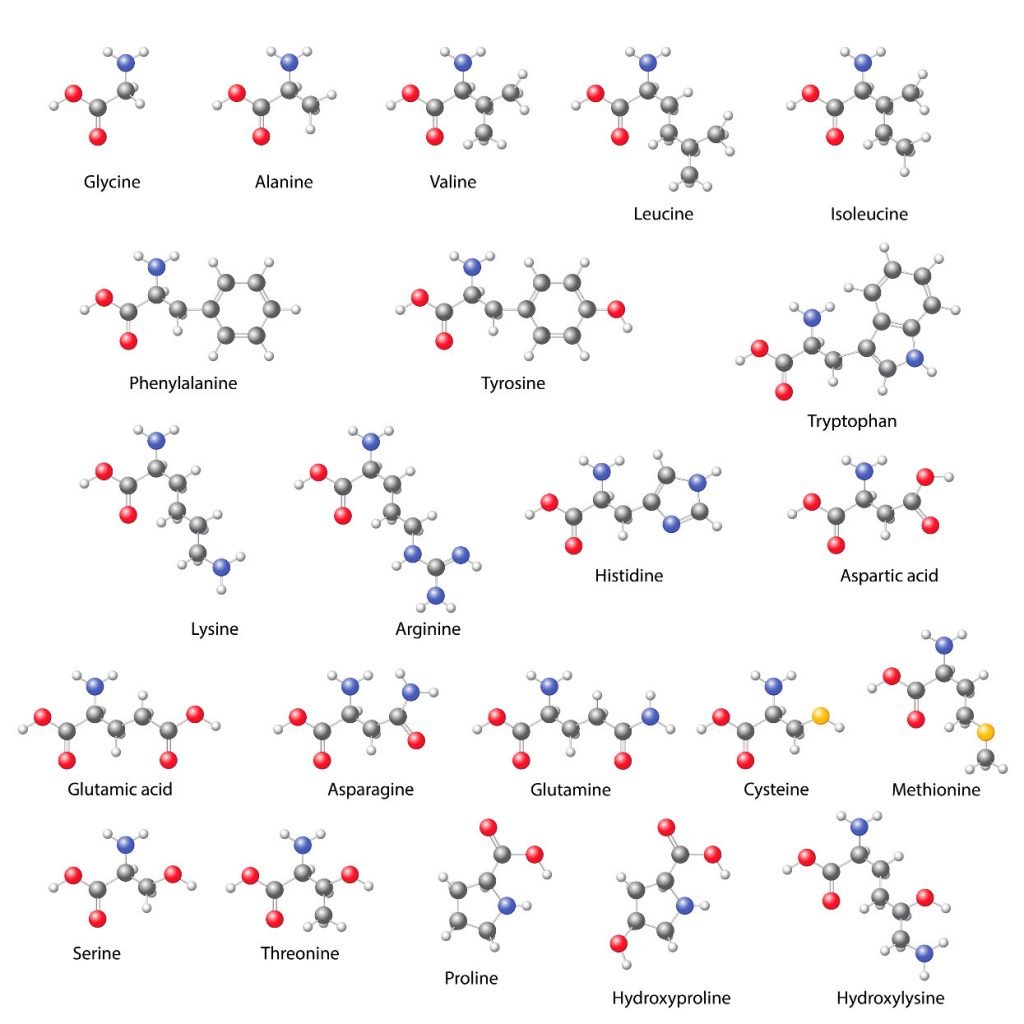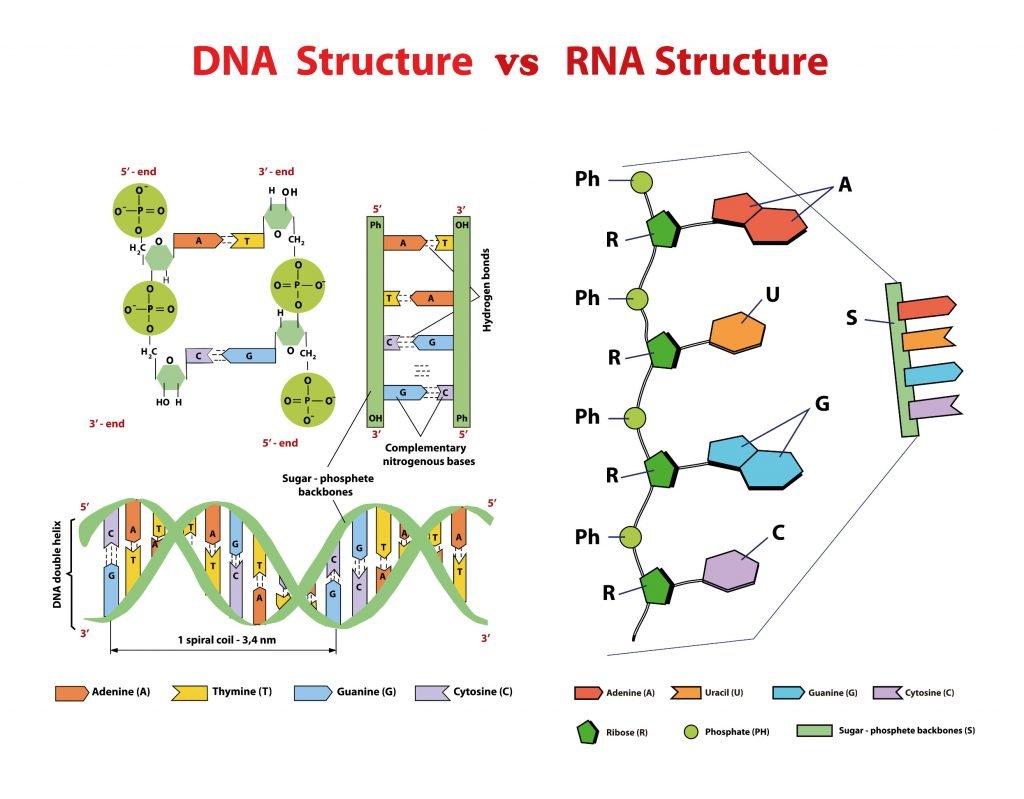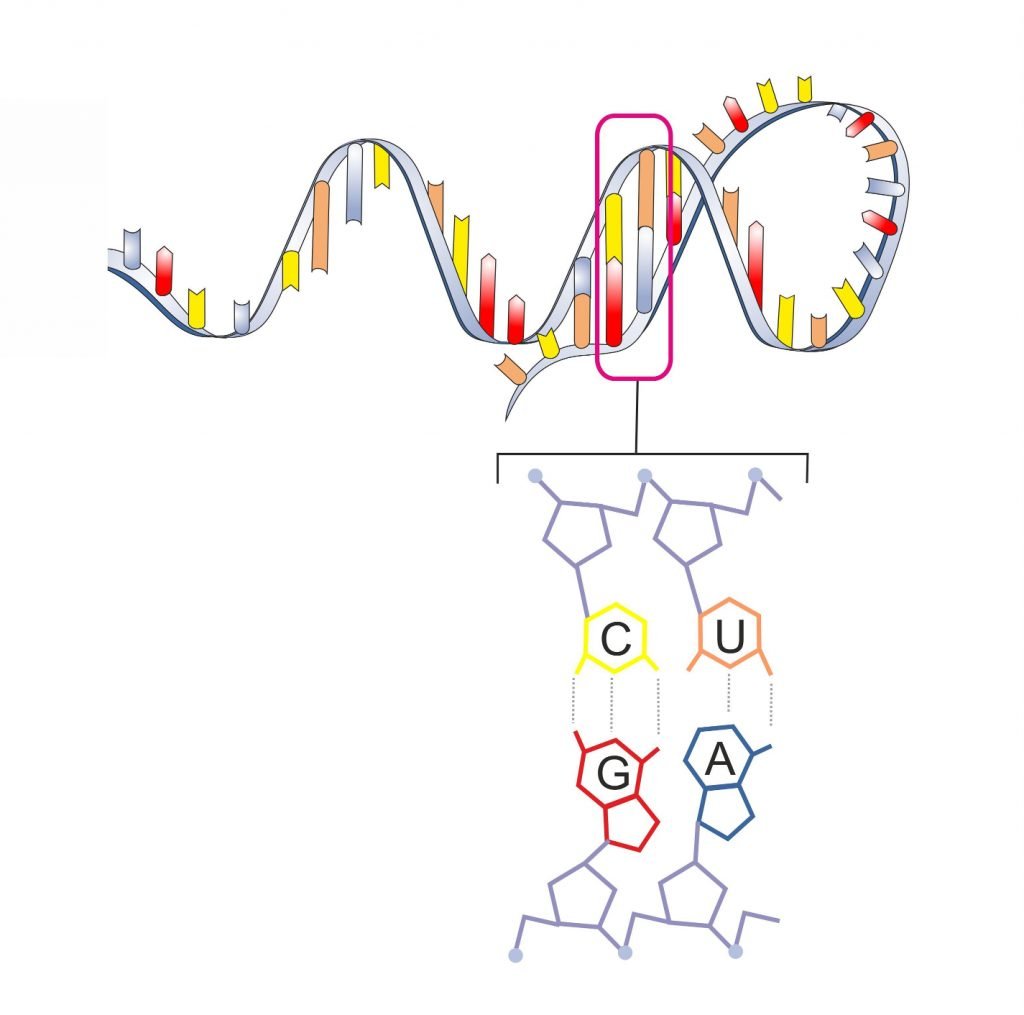This is an excerpt from the book series Philosophy for Heroes: Continuum.
How would you create a life-like model of your face? A simple approach is to cover your face with papier-mâché, let it dry, detach it from your face, then fill the inside of the mask with plaster, let that dry as well, and detach the papier-mâché from the plaster. The result of this process is a plaster cast of your face—a representation, not an actual copy of your face.
Now, this only works because you have copied but one simple layer, namely the surface. Real three-dimensional copying (including all your bones and flesh) is not possible this way. But modern life forms, from simple bacteria to multicellular organisms, can achieve that.
The Pen That Draws Itself
How do modern multi-cellular life forms solve the problem of creating three-dimensional copies of themselves—their offspring?
When we draw, we have an idea in our head and a tool in our hand. This is similar to the prerequisites of Tierra, Universal Constructor, and Gemini, as they all have their computer code (their “idea”) and their “pen” (the computer world that executes their computer code) separated. At first glance, this gives us the classic chicken and egg problem: which was first? Without the computer code, there is nothing to copy, and without a mechanism that creates copies, there is no replication.
This problem bears resemblance to what we have discussed in the first book, Philosophy for Heroes: Knowledge [Lode, 2016], when talking about ontology and epistemology:
[Ontology] and epistemology are simultaneous—what exists and how we know it are the foundation that starts together. And that’s why the very first axiom is “Existence exists, and the act of grasping this implies there is something, and we have the faculty for being aware of it.” And thereafter we shift back and forth, “We have consciousness,” “A is A,” “Existence is independent of consciousness,” “We acquire knowledge by reason,” and so on. [Ontology and epistemology] are completely intertwined. —Leonard Peikoff, Understanding Objectivism[Peikoff, 2012, p. 170]
Whatever the first life on Earth looked like, somehow, it had to be both the pen and the idea—the genetic code—at the same time. What we are looking for are molecules that contain genetic information which itself also had chemical properties that could produce building blocks for replication of this genetic information.
While the previously discussed Gemini in Game of Life comes closest to what we know as life—no central processor, just relying on the laws of nature or chemistry of the environment, plus self-replication—it still does not explain the origin of life. The Gemini program shows no sign of how it could develop on its own. As such, it remains a theoretical explanation with no real-life relevance. We are looking for simple structures and rules that lead to complex functionality like self-replication, not the other way around.
Following the evolutionary idea of developments in small steps, the first life on Earth could not have had both of those two mechanisms in place simply due to chance. In Game of Life, a programmer manually designed the Gemini program, it did not develop out of itself. For the origin of life, we either also have to rely on such a designer, or we need to find a much simpler candidate for the first life form.
Building Blocks
To approach the problem, we can try to look at the “pen”—nature—more closely. We can examine how modern cells procreate and hope to find clues about how the first form of life did it. In modern organisms, procreation is split into two parts, namely the phenotype (the three-dimensional body) that is not cloned, and the genotype (the one-dimensional blueprint of the body) that is cloned and that builds the phenotype from the ground up.
This type of encoding three-dimensional structures into one-dimensional data was the biggest milestone in evolutionary history. It developed probably around two billion years after life first appeared on Earth. This encoding was done with a special molecule, the deoxyribonucleic acid (DNA), similar to the genetic information in Tierra or Gemini we have discussed.
DNA has two functions: creating blueprints for cell parts, and self-replication. For the genotype, the two strings unwind and chemicals dock on individual places on the string, forming the blueprint. For replication, the two strings also unwind and two new DNA strands are created in place (see Figure 4.19). DNA consists of four different building blocks—nucleobases (cytosine, guanine, adenine, and thymine)—that encode the genetic information and are fixed on two sugar-phosphate backbones. As such, DNA is a long molecule consisting of two intertwined strings.

The nucleobases are formed from amino acids, the basic building blocks of life (see Figure 4.20). Amino acids are different variations of combinations of carbon, hydrogen, oxygen, and nitrogen atoms. Geochemical research has shown that these amino acids were most likely readily available on the ancient Earth, so they are a candidate for the origin of life. The Miller-Urey experimentcreated a simple model of the ancient Earth with a mixture of water, methane, ammonia, and hydrogen as the ocean and firing electrical sparks into it (resembling lightning); 11 of the amino acids appeared in the solution.

When creating a copy of itself, with DNA, modern multi-cellular life uses the same principle as we do when making plaster casts of, for example, our hand. The difference is that, in the case of DNA, only the genetic information—not the three dimensional structure—is copied, which is only then subsequently used to build a whole copy of the original organism.
But in regard to understanding the origin of life, knowledge of highly efficient modern cells actually stands in the way. We are too inclined to approach this question by dividing it into genotype and phenotype—into design plan and organism. Where could early life have had the required machinery that allows unwinding and copying the DNA? How could it facilitate the multi-stage creation of proteins through negative copies of DNA in order to build nucleobases?
Results from DNA analysis help us to piece together the puzzle of how life evolved on Earth. We have evidence that some of the contents of our DNA go back at least 1 billion to 2 billion years, meaning that some of the same instructions that built life back then are also active now. But the challenge scientists are facing when trying to answer these questions is that there are neither survivors of any earlier life forms, nor are there any definitive traces in living organisms of the mechanisms that came before DNA. In that regard, discovering the origin of life is a detective story.
So, what we are still looking for is a “pen that draws itself”—a genotype with the ability to interact with its environment in the same way a phenotype can. But without the machinery, DNA is but information, it just rests there, without anything that would constitute a “pen”: in its compact, double-stranded form, DNA has no chemical properties to speak of. On the other hand, theblueprints it produces for the production of proteins—the Ribonucleic Acid (RNA)—do, and it is the pen we are looking for. That is why the focus of scientists moved from the DNA world hypothesis—the idea that the first life form already had DNA—to the RNA world hypothesis.
The Conditions for Evolution
We have talked about evolution, exploring how a functioning, procreating organism can adapt to a changing environment over several generations. One significant point we have discovered is that it is the environment that forms the organism, not the organism pursuing its own long-term evolutionary “goals.”
This idea works well until going back to the first life form who had no parents: at some point in Earth’s history, there had to be a situation where at one point there was no life, and later there was. At first glance, this is a contradiction: This also meant that at one point there was not a self-replicating organism, while there was one at the next. It means that the first self-replicating life form was formed by its environment.
But even if you had a chance to take a look at the ancient Earth, you would not notice the moment when life begins—just as you will have difficulties finding the “first human,” you will have difficulty finding the “first life.” The first human looks very much like his or her “non-human” parents and any distinction becomes meaningless. So, the first life form was probably not revolutionary at the time. Only when looking back, could we arbitrarily set a point of life and another of “before life.” Each state—even the “origin of life”—is rather something that naturally follows from the previous state.
At least, that is what scientists are trying to prove. This transforms the theory of evolution from a theory about how species evolve from one to the next, to a more general theory about life. This theory of life needs to show that starting from non-living matter, life can develop and that each step along the way can be shown to logically follow the previous one. And this is how it should be, evolution never works in jumps or miracles.
This gives us a clear goal for what we need to look for: instead of trying to come up with a scenario where all the parts magically came together, we are looking for a logical chain of small steps adding up without the need for chance. This narrows down the possibilities, making the search for the origin of life easier.
From our previous introduction into evolution, we know that at least three conditions need to be met:
- The life form has to be able to increase the number of copies of itself in its environment.
- A population of self-replicating life forms needs to have variations, for example caused by mutations.
- The life form has to be able to operate for its own advantage.
Nucleotides of the RNA
Before discussing the RNA world hypothesis, let us first look at RNA itself. Like DNA, RNA consists of nucleobases that are attached to a strand of a sugar-phosphate backbone (forming nucleotides). When comparing DNA and RNA molecules, you can notice that RNA consists of only one strand, DNA of two. Both strands consist of a sugar-phosphate backbone with nucleobases (adenine, thymine, guanine, and cytosine for the DNA, and adenine, uracil, guanine, and cytosine for the RNA) representing the genetic information (see Figure 4.21).

But where did the nucleotides come from? In modern cells, nucleotides are produced in a complex chain of chemical reactions. But for the first life on Earth, this cellular machinery was unavailable. For the first life forms, the only alternative was that the nucleotides were already available in the water.
The surface of the ancient Earth was unlike what we have today. How Earth got all its water is still an open discussion. One theory is that ice comets hit the ancient Earth, melted, and thus distributed water on its surface. While this sounds far fetched, comets were much more common in the early solar system than today and ocean water is similar to water found in asteroids: this was possible to check because water has a unique signature, its ratio between normal water (H2O) and heavy water (H2O2).
This insight led NASA to look more closely at chemical reactions in space. In space, the temperatures are near absolute zero, while unfiltered ultraviolet radiation from the sun hits the comet. Recreating these conditions in the laboratory and using chemical compounds similar to those found in comets, scientists were able to recreate the very same nucleotides that the RNA and DNA are using.
The RNA World Hypothesis
In order for DNA to translate its code into proteins, it needs a working cell machinery which was unavailable for the first life. At the same time, those proteins are needed in order to build copies of DNA. How does the RNA world hypothesis solve this chicken-or-egg causality dilemma?
What if life on the ancient Earth was not a piece of DNA but a single-strand piece of RNA? The core of the RNA world hypothesis states that a single-strand RNA piece floated around in a soup of nucleotides which, over time, docked with the RNA and created a negative copy of the original RNA. After the negative had been created, energy was applied to cut off the negative copy (in the DNA world, special enzymes wind and unwind the DNA strands—enzymes unavailable for the first living cells) which proceeded to do the same, creating a negative of itself as well—a (positive) copy of the original RNA. In that regard, the aforementioned “pen” would be the environment, providing the building blocks, and the RNA string simply waits until the environment is done with drawing, i.e., adding the molecules for a complete negative copy. This approach would fulfill the first condition of increasing copies of themselves in the environment.
But the second condition of evolution is that there needs to be variations. Sure, there might be different copies of RNA floating around, but they are only genotypically different. If the only difference between two organisms is that they have a different genetic code but if they do not differ in their other chemical properties, there is no evolution. Imagine a tiny RNA strand of just two bases (nucleotides), adenine (A) and guanine (G). It floats around, docks with uracil (U) and cytosine (C), creating a new RNA strand UC, which in turn docks with adenine (A) and guanine (G), creating a copy of the original RNA strand. Which of those strands is now more adapted to the environment? How do they differ?
What is missing here is the step from the genotype to the phenotype, meaning interaction between the genetic information and the environment beyond mere self-replication. In the above example, assuming that there are enough nucleotides available, an adenine-uracil RNA strand would be just as adapted to the environment as a adenine-guanine RNA strand. So, while we have self-replication of information, no evolution can take place.
In modern cells, the genotype (the DNA) produces RNA which is then used to produce proteins which are used to, for example, build nucleotides which improve the speed of replication. Instead of just waiting for molecules floating around in the environment to randomly dock with the RNA to create a copy, the cell actively takes part in creating the building blocks necessary for copying itself.
But RNA is very different than DNA. DNA always consists of two intertwined strands. Only when they unwind can they interact with the environment in a meaningful way. RNA on the other hand is a single strand—it can interact with itself. Perhaps the strongest evidence for the RNA world hypothesis is the fact that modern cells’ ribosomes are folded RNA strands that also catalyze chemical reactions crucial for the cell’s survival.

Imagine an RNA strand that has the base pairs CU (cytosine-uracil) later followed by AG (adenine-guanine). Because cytosine docks with guanine, and uracil docks with adenine, in three dimensions, it can fold into a loop (see Figure 4.22). You can imagine that with this self-interacting property, different genetic RNA codes can form any number of different structures. Each structure would have unique chemical properties, acting as catalysts for chemical reactions, and fulfilling the second condition for evolution (variety). This is something that DNA cannot do, hence there is a strong indicator for an RNA world as opposed to a DNA world.
Scientists have begun creating self-replicating RNA strands by mixing nucleotides in the laboratory. They have found that among self-replicating RNA strands, there are some that can facilitate the production of nucleotides, increasing the speed of self-replication. With this, the RNA world hypothesis fulfills the first and second conditions for evolution. Any change in structure that made the RNA more stable, better at procreation, and ultimately better adapted to the environment (e.g., diminishing resources) was passed on to the next generation.
While there are still some open questions, we are now very close to a full theory of the origin of life, and the ability to recreate life ourselves in the laboratory. What is now missing is the third and last condition for evolution, namely that the efforts by the RNA to, for example, catalyze the creation of nucleotides to increase self-replication, helping all RNA strands in the environment, not just the one that does all the work.
The origin of life poses the chicken-or-egg causality dilemma: which came first, the genetic code that builds the cell machinery, or the cell machinery that builds the genetic code? It is similar to the egg having to come up with a chicken that creates the egg. The RNA world hypothesis solves this dilemma by combining both parts into one RNA molecule. As opposed to DNA, RNA can interact with itself, creating three-dimensional structures that can act as chemical catalysts for building proteins. This dual nature of RNA—having both genotypical (genetic information) as well as phenotypical (catalyst for building proteins) properties—makes it an ideal candidate for the first self-replicating life form.
The First Cell Membrane
The third condition for evolution to take place is that the life form has to be able to operate for its own advantage. The point is that the reactions necessary to build a copy of the RNA need to happen within a protected space. Otherwise, one does the work for another organism without getting the reward. Real evolution can only happen if an organism can keep the fruits of its labor, and positive mutations are rewarded directly. From an evolutionary point of view, any chemical reactions of an organism can be hijacked by any competing organism. This is what happened to organisms in Tierra where viruses were able to access the interior of other organisms in the memory, stealing their energy in order to replicate themselves. It is like a group project where everyone builds parts but they all are thrown in a large bin. If someone is a lazy, he or she will just take the parts from the bin without taking part in the work.
This fundamental problem can be solved by putting the organism within a cell with a permeable membrane. Luckily, we have already talked about such a membrane: liposomes. All that needs to happen is that:
- A forming liposome catches a self-replicating RNA,
- Lets amino acids pass into the cell,
- Has the RNA construct nucleotides from them,
- Has the RNA replicate itself,
- Acquires more phospholipids to grow itself, and
- Passes through another pore to split into two cells.
Once the first self-replicating RNA strand (created from nucleotides from ice meteoroids) was captured in a liposome, the first protocell was formed. With its first procreation, evolution took its course. All evolution needed was the right mix of chemistry to provide the earliest forms of life with a whole set of tools. These tools made it possible to create structures like membranes, and even practice primitive computing: “if substance A and substance B collide, substance C is created.” This allowed for the construction of chemical pathways to build more complex molecules in several steps.
For the scientific progress of biology, getting access to the blueprint, the genotype, allowed great advances in classification of life forms. Before this, biologists had to rely on observation and morphology. Now, they are able to calculate entire trees of relationships between all known life forms on Earth and no longer have to compare bones and take guesses. Sadly, despite humanity sharing more than 99.9% of the genetic code with each other, issues like racism persist. Science still has a long road to educate people about their true heritage, their ancestors, and how much they have deeply in common. This education—along with exposing and opposing leaders who preach antagonism, who want to divide us based on 0.1% of genetic code—is the true task of a modern hero. If we want to live in this world in peace, we need to focus on our similarities while respecting individual differences. We should be wary of the people who want to give us meaning and purpose by dividing us and creating artificial conflict. But before we can tackle such a complex subject, we will first have to find out more about our mind, and then about values and our psychology.
While the theory of the origin of life takes away the idea of a sudden miracle (or “chance”), it adds a deep appreciation for the universe—how it is ruled by interlocked natural laws, not by chance. Of course, without the knowledge of all the environmental conditions, the suggestion that life could have developed on its own indeed seems preposterous and only to be explained by something supernatural.
Summary
When creating a copy of itself, with DNA, modern multi-cellular life uses the same principle as we do when making plaster casts of, for example, our hand. The difference is that, in the case of DNA, only the genetic information—not the three dimensional structure—is copied, which is only then subsequently used to build a whole copy of the original organism.
The origin of life poses the chicken-or-egg causality dilemma: which came first, the genetic code that builds the cell machinery, or the cell machinery that builds the genetic code? It is similar to the egg having to come up with a chicken that creates the egg. The RNA world hypothesis solves this dilemma by combining both parts into one RNA molecule. As opposed to DNA, RNA can interact with itself, creating three-dimensional structures that can act as chemical catalysts for building proteins. This dual nature of RNA—having both genotypical (genetic information) as well as phenotypical (catalyst for building proteins) properties—makes it an ideal candidate for the first self-replicating life form.











